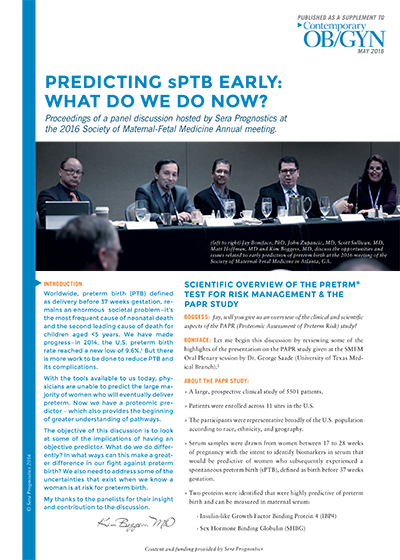Predicting sPTB Early: What Do We Do Now?
The objective if this discussion is to look at some of the implications of having an objective predictor. What do we do differently? In what ways can this make a greater difference in our fight against preterm birth? We also need to address some of the uncertainties that exist when we know a woman is at risk for preterm birth.
Predicting sPTB Early: What Do We Do Now?
With the tools available to us today, physicians are unable to predict the large majority of women who will eventually deliver preterm. Now we have a proteomic predictor – which also provides the beginning of greater understanding of pathways.
The objective if this discussion is to look at some of the implications of having an objective predictor. What do we do differently? In what ways can this make a greater difference in our fight against preterm birth? We also need to address some of the uncertainties that exist when we know a woman is at risk for preterm birth.
FDA grants 510(k) clearance to chemiluminescence-based immunoassay
Published: January 10th 2025 | Updated: January 10th 2025The automated chemiluminescence-based immunoassay has received clearance for free testosterone, providing enhanced diagnostic options to a multitude of conditions.
Read More


